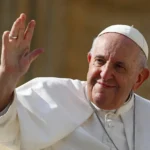In exploring influential figures who have left a lasting imprint on global consciousness, few names resonate as profoundly as Pope John. Whether it’s Pope John XXIII, remembered for initiating transformative reforms, or Pope John Paul II, whose global outreach redefined the papacy’s role, the title “Pope John” has become synonymous with pivotal shifts within the Catholic Church and beyond.
This article unpacks the legacies, decisions, and ripple effects of the popes who bore this significant name—providing insight into their lives and their impact on religion, politics, and society. Readers can expect to gain a nuanced understanding of why the name “Pope John” continues to spark discussion across cultures and generations.
Understanding the Name: Who Were the Popes Named John?
Across the long history of the Roman Catholic Church, over 20 popes have taken the name John. This name carries a sense of continuity and tradition, rooted in biblical symbolism and early Christian reverence. The most notable figures bearing the name include:
-
Pope John XXIII (1958–1963): Revered as a reformer, he is widely known for convening the Second Vatican Council, which ushered the Church into modernity.
-
Pope John Paul I (1978): Known as “The Smiling Pope,” his papacy lasted only 33 days, yet his humility and openness left a memorable impression.
-
Pope John Paul II (1978–2005): One of the most influential Spiritual Leaders of the 20th century, he traveled the world and was pivotal in global political shifts, including the fall of communism in Eastern Europe.
Each pope named John carried unique ambitions and faced distinct challenges, but collectively, they contributed to a legacy of adaptation, diplomacy, and doctrine.
Pope John XXIII: Reform from the Inside Out
Few religious leaders have triggered institutional change quite like Pope John XXIII. When he called for the Second Vatican Council in 1962, many expected a routine review of doctrine. Instead, what unfolded was a seismic shift: Mass could now be celebrated in local languages instead of Latin, laypeople gained greater involvement, and the Church took a more conciliatory stance toward other religions.
These changes weren’t universally welcomed at the time. Traditionalists feared a dilution of sacred rituals, while progressives saw an overdue modernization. Yet, Pope John XXIII’s vision was rooted in a profound understanding of faith as a living, evolving force—one that must engage with contemporary society rather than retreat from it.
Pope John Paul II: A Pope for the Global Age
If John XXIII reformed the Church from within, Pope John Paul II redefined its external role. Elected in 1978, he became the first non-Italian pope in over 450 years and quickly demonstrated a mission-oriented approach. Traveling to more than 120 countries, he made the papacy visible, relatable, and politically relevant.
His moral opposition to communism, particularly in his native Poland, provided a rallying point for democratic movements. His theological conservatism, however, sparked criticism, especially on issues like contraception, LGBTQ rights, and women’s roles in the Church.
Despite polarizing views, he was a spiritual bridge-builder, engaging with Jews, Muslims, Hindus, and Buddhists in ways that his predecessors had rarely attempted. His leadership blended charisma with conviction, making him a symbol of both continuity and challenge.
The Role of “Pope John” in Shaping Public Perception
Beyond individual accomplishments, the name Pope has become emblematic of pivotal turning points. It evokes a complex tapestry of reform and restraint, inclusion and exclusion, dialogue and doctrine. The frequency with which the name has been adopted suggests a reverence for its historical weight.
From Vatican corridors to international arenas, the Popes John have managed to make the Church not only visible but also influential in public discourse. Whether inspiring massive youth pilgrimages or initiating global peace conversations, they consistently engaged with the questions of their time.
Why the World Still Talks About Pope John
The enduring fascination with Pope John stems not just from religious devotion but from a broader human curiosity about how institutions evolve and respond to change. His legacy offers a case study in leadership under scrutiny—one where tradition meets transformation, and where the personal becomes political.
These leaders were not immune to error, nor were they universally beloved. But their willingness to face the friction of progress and principle set a standard for religious leadership in a world defined by complexity.
What Comes Next?
As new leaders emerge and the Church continues to wrestle with modern challenges, the examples set by the Popes named John serve as a compass. How can future popes balance the expectations of a global congregation while honoring centuries of tradition? What does moral leadership look like in an age shaped by digital voices, decentralized authority, and cultural pluralism?
Magazin Union guides you through the latest trends and stories, providing valuable information and perspectives on current events and more.





